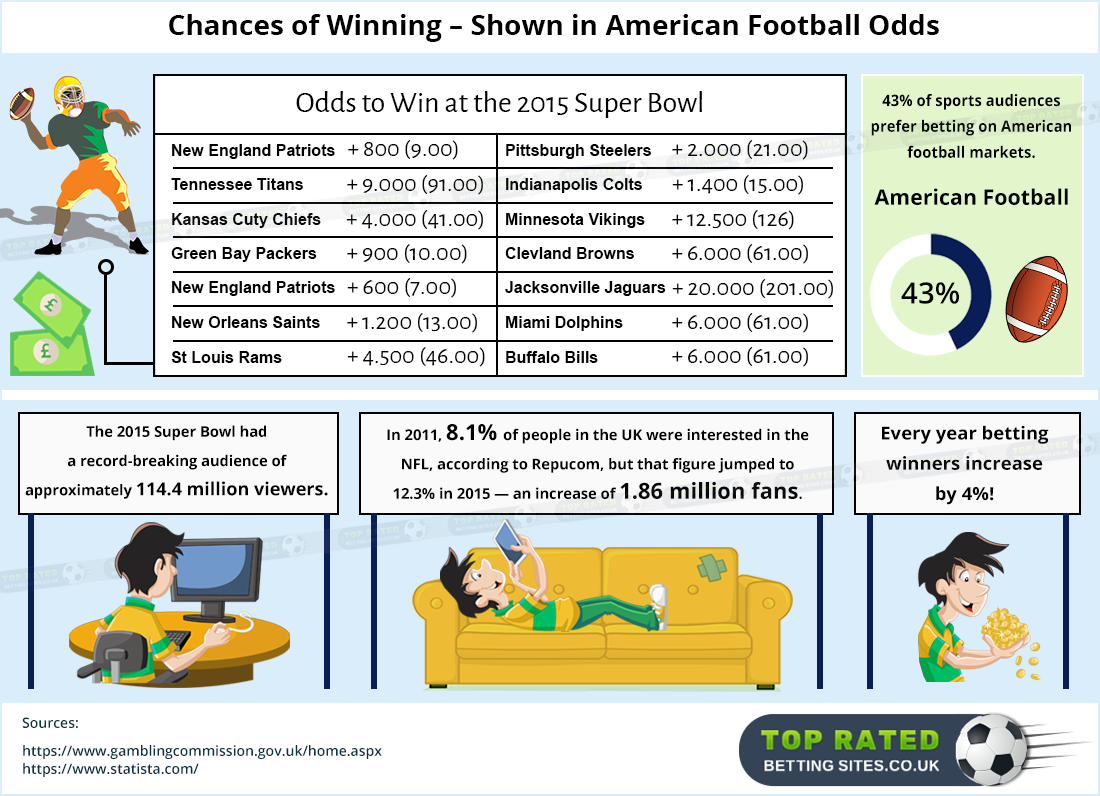Fractional Odds are used primarily in the UK and Ireland. Few bettors use fractional odds for betting sports (other than horse racing), because the conversions to understand return are difficult. To calculate winnings on fractional odds, multiply your bet by the top number (numerator), then divide the result by the bottom (denominator). This means that if the odds were 15/56 as you state above, the odds are worse as you only get £15 return on top of your stake for every £56 you bet. The best odds are where the value on the left is much bigger than than the value on the right. 10/1 is better than 17/2 because in effect 17/2 is 8.5/1 (i.e 17 divided by 2).
Most of us have been there.
You've lined up a bet, it's in your bet slip, but just as you go to submit your bet you receive an alert from the bookmaker site telling you that the odds have changed for the worse.
It's a relatively simple question, but one that we're often asked:
Should you accept the lower odds after a bookmaker cuts the price?
In this short post, we give you our thoughts and some numbers behind the decisions.
On Regular Bets
If you're placing a good ol' fashioned regular punt, the decision to accept the new odds should depend entirely on the value you thought was in the bet in the first place.
When you looked at the original odds, and perhaps your research if you're the type to do that kind of thing, how much value did you think was in your selection?
If you thought you were getting an unbelievable price based on your knowledge, and the new odds still reflect what you believe to be good value, then you should have no issue in accepting the lower price.
However, bookmakers usually cut the odds because they realise they're offering value and they usually cut them to a price that no longer does – not offering value is how they make money, after all.
This doesn't mean it's impossible to still find value after the odds are cut. It just means it's harder.
The most important thing about this is when you're eyeing up a price that you think provides some value, but not lots of value.
If you're eyeing up a price that you think should provide a small ROI over time but then the odds are cut, how low do they need to be cut before it's no longer profitable long-term?
Remember, it's all about finding the right bet at the right price,and not just about picking a winner.
If the price no longer offers value, don't take the odds. It's as simple as that.
As a side note, if the odds increase in price, be sure to check that the situation hasn't changed before blindly accepting the bet. Has a team suffered an important pre-match injury? Is the horse rearing up in the stalls?
On Matched Bets
If it's a matched bet you're placing and the odds change, you have a couple of different things to consider.
Firstly, were you already taking a large amount of value with your bet?

For example, were you losing a tiny amount on your qualifying bet or making a huge return on your free bet? If so, it might be worth taking the lower odds to make your account profile look less suspicious.
Had you already laid the bet before placing your bookmaker bet?
We don't recommend doing this, but if you had done so for some reason then you absolutely should accept the lower odds. Just update the calculator with the new price and accept the loss you'll inevitably make. You don't want to leave the bet running or be tempted to wait and inevitably end up losing even more.
If you have no real reason to accept the lower odds, i.e. you weren't taking excessive value and you weren't in a rush to prevent making a loss, you should simply cancel the bet and re-use your oddsmatcher to find a new selection.
There are times with certain offers that a reduction in price still provides a +EV bet.
For example, you might find a ‘Double Delight, Hat-Trick Heaven (DDHH)' bet at odds of 6.0 to back and 6.0 to lay.
Let's say that the player's back odds get cut to 5.0. Because it's general consensus that these bets are +EV up to qualifying losses of 20%, this price would still provide some value.
The qualifying loss percentages for that odds match would be 16.66%, 18.06% and 20.16% at 0%, 2% and 5% commission respectively, so it still seems to provide some EV after the cut.
Conclusion
The general answer to whether you should accept lower odds in the case of an odds movement would be: no.
However, this isn't true in all circumstances.
There are times when you can still find value after a reduction in price, both for regular bets (or ‘punts') and matched bets.

There are also other times that taking reduced prices could help to make your account look less suspicious and less likely to be restricted as a result.
In association with SportingbetWithout odds there would be no betting and without understanding odds there will be no winning customers. The odds are quite simply the price, they are used to calculate exactly how much you will receive if your bet wins. Generally speaking the odds don't change no matter how much (or little) you want to stake on a selection.
There are two main types of odds. Fractional and Decimal. There is no monetary difference between the two and no reason to choose one over another. They are simply different ways to display the same thing.
Fractional Odds

For example, were you losing a tiny amount on your qualifying bet or making a huge return on your free bet? If so, it might be worth taking the lower odds to make your account profile look less suspicious.
Had you already laid the bet before placing your bookmaker bet?
We don't recommend doing this, but if you had done so for some reason then you absolutely should accept the lower odds. Just update the calculator with the new price and accept the loss you'll inevitably make. You don't want to leave the bet running or be tempted to wait and inevitably end up losing even more.
If you have no real reason to accept the lower odds, i.e. you weren't taking excessive value and you weren't in a rush to prevent making a loss, you should simply cancel the bet and re-use your oddsmatcher to find a new selection.
There are times with certain offers that a reduction in price still provides a +EV bet.
For example, you might find a ‘Double Delight, Hat-Trick Heaven (DDHH)' bet at odds of 6.0 to back and 6.0 to lay.
Let's say that the player's back odds get cut to 5.0. Because it's general consensus that these bets are +EV up to qualifying losses of 20%, this price would still provide some value.
The qualifying loss percentages for that odds match would be 16.66%, 18.06% and 20.16% at 0%, 2% and 5% commission respectively, so it still seems to provide some EV after the cut.
Conclusion
The general answer to whether you should accept lower odds in the case of an odds movement would be: no.
However, this isn't true in all circumstances.
There are times when you can still find value after a reduction in price, both for regular bets (or ‘punts') and matched bets.
There are also other times that taking reduced prices could help to make your account look less suspicious and less likely to be restricted as a result.
In association with SportingbetWithout odds there would be no betting and without understanding odds there will be no winning customers. The odds are quite simply the price, they are used to calculate exactly how much you will receive if your bet wins. Generally speaking the odds don't change no matter how much (or little) you want to stake on a selection.
There are two main types of odds. Fractional and Decimal. There is no monetary difference between the two and no reason to choose one over another. They are simply different ways to display the same thing.
Fractional Odds
Fractional odds are displayed as 10/1 or 7/2. There are several ways to try and understand them but the easiest way is 'how much you will win'/'how much you stake'. So for example if you stake £1 at 10/1 you will win £10 (remember that's your profit, you will receive your pound back too!). If you stake £2 at 7/2 then you will win £7 and get your £2 stake back.
You can see odds which appear to be the wrong way round for example 1/10 or 2/7. These are what are referred to as ‘Odds-On' selections and you would have to stake £7 to win £2. You will see odds of this type when there is a strong favourite to win. For example when Chelsea lined up against Ipswich in the FA Cup, the Blues were as short as 1/10 to win the game.
Most online betting sites will show you your potential winning on the betslip but it's crucial to understand the odds in order to get value. To be a winning punter, you not only have to back winners but you have to do so when the price accurately reflects the chance of winning. It's very easy to say that Chelsea would beat Ipswich but are you willing to stake £100 to make a profit of just £10?
To calculate your potential returns from fractional odds:
((Stake /denominator) x numerator ) + stake
For example, £10 staked at 7/2:
((£10/2) x 7) + £10 = £45
Now fractional odds are confusing and just by writing the above section I am wondering why on earth anyone still uses fractional odds! In the opinion of this bookmaker, decimal odds are far easier to understand. If I asked you quickly to say which is the bigger price, 7/4 or 9/5? You'd have to think about it, right? But if I asked which is the bigger number 2.75 or 2.80? It's not so hard.
So the equation for calculating returns from decimal odds (which are written as 1.80 or 4.50) the equation is so much simpler:
Stake x Odds
For example, £10 staked at 4.5:
£10 x 4.5 = £45
With decimal odds your stake is automatically included in your returns and it makes for a far easier calculation. Decimal odds of 2.0 represents even money (1/1) and anything less than 2.0 is an odds on bet. So for example 1.50 will see you win half your stake and to continue the example of Chelsea from above, Chelsea were priced at 1.10 to beat Ipswich Town.
You will never see odds of less than 1.00 but you can see 1.01 for example when a good team is winning 2-0 at home with ten minutes to play. You would need to be mighty brave (and in my opinion mighty stupid!) to back selections at 1.01. You'd have to be confident that backing this 100 times would be successful 100 times in order to stay in profit and having seen many late goals and dodgy referees decisions, 1.01 is to be avoided like the plague.
If you need to convert fractional odds into decimal odds, it's easy enough. Just divide the fractions and add one (the one represents your stake). So for example to convert 7/2 into decimal odds, you would divide 7 by 2 and add 1, which gives you 4.5. It's easy enough but if that all seems to complicated then just search for 'odds converter' and let someone else do the work for you!

